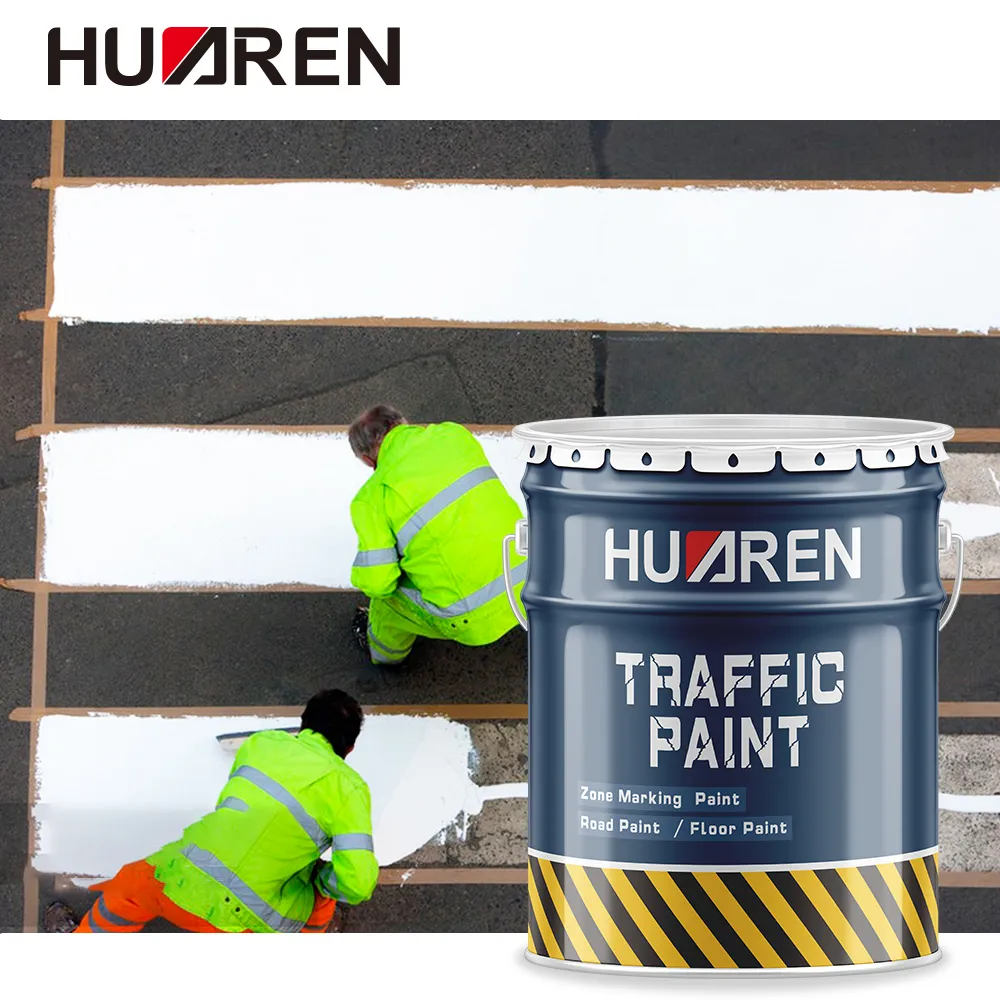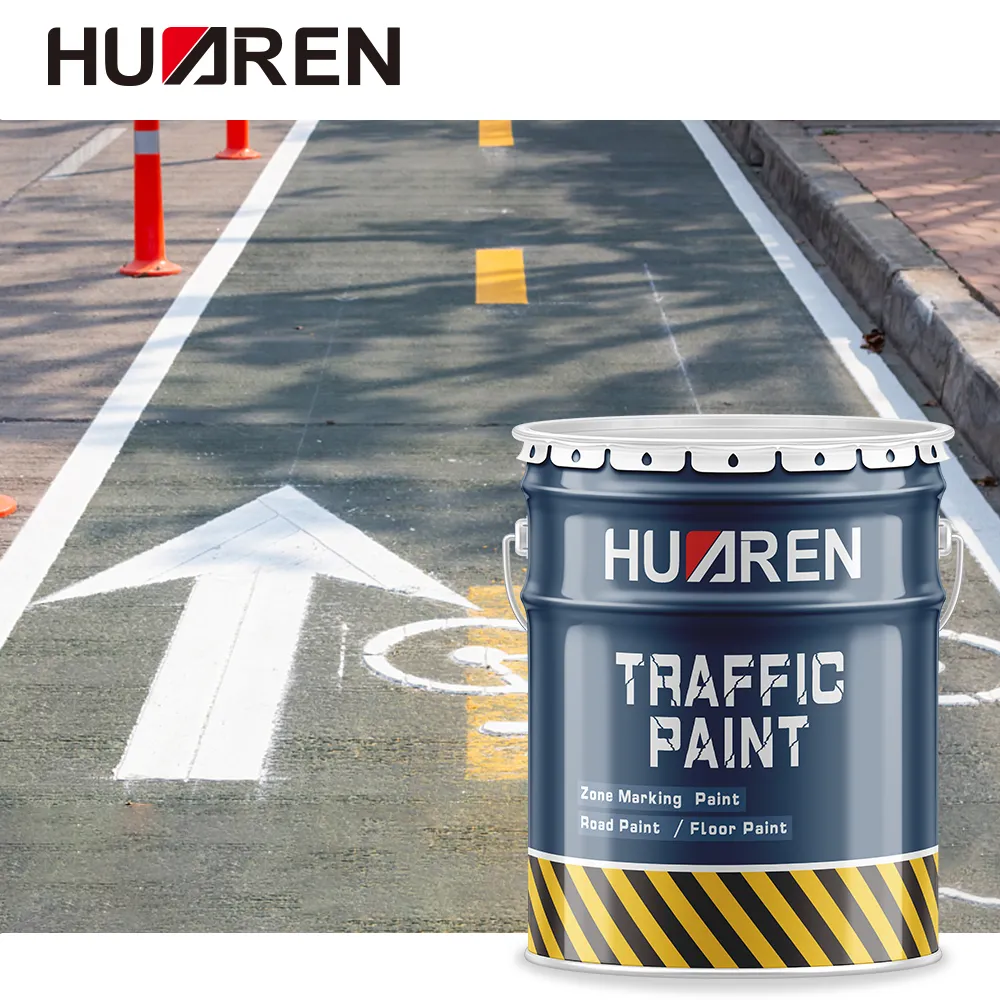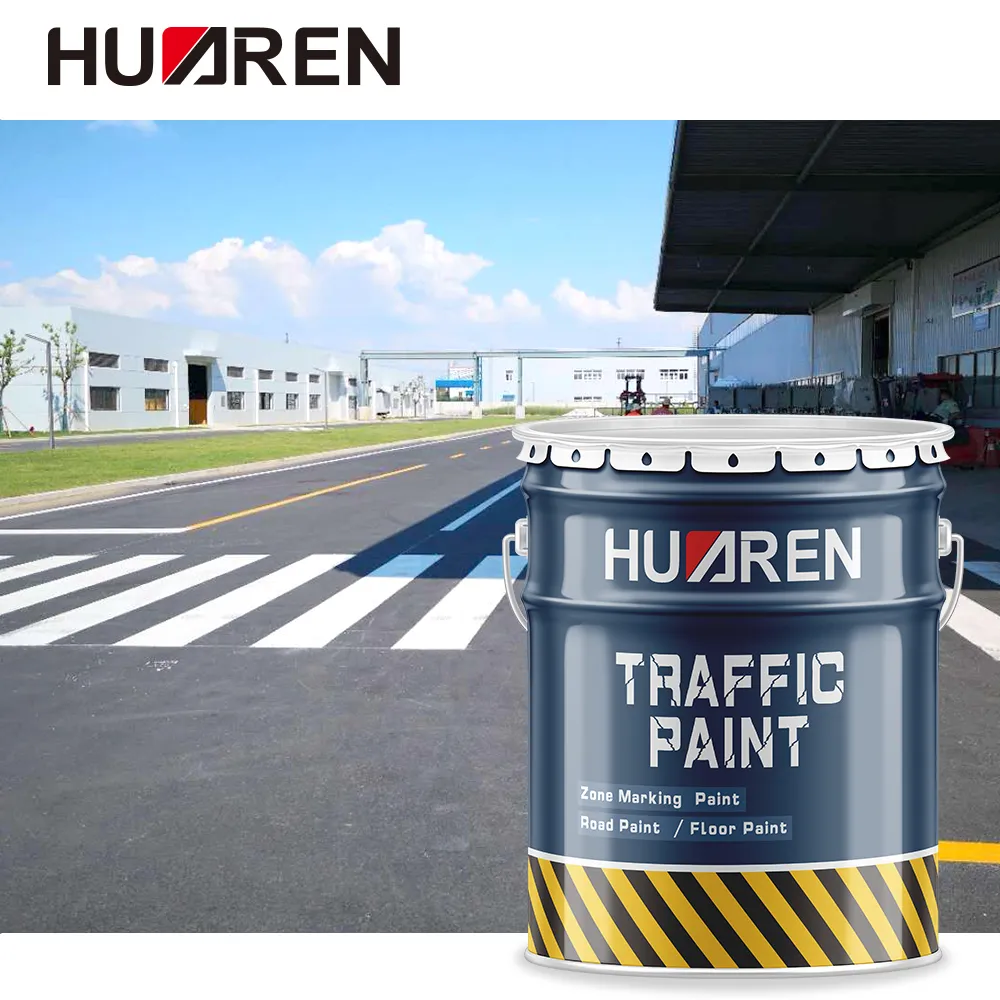White road marking paint is a vital part of road traffic management. Clear and durable markings not only guide traffic flow, but also improve driving and pedestrian safety. However, as time goes by and traffic volume increases, road markings will gradually wear and fade, affecting their function and appearance.
Therefore, it is crucial to understand the maintenance cycle of white road marking paint and the correct painting method. This article will discuss in detail the painting cycle of white road marking paint and its specific painting steps.

How often does white road marking paint need to be painted?
Factors affecting the painting cycle:
1. Traffic volume and traffic pressure: Roads with heavy traffic have faster marking wear and usually require more frequent painting. Road sections with frequent heavy vehicles have more obvious wear and tear.
2. Climate conditions: Extreme weather such as heavy rain, high temperature, and severe cold will accelerate the aging and fading of markings. In cold areas, ice, snow, and de-icing salts also seriously erode markings.
3. Road marking materials: Different types of road marking paints such as hot melt, solvent and water-based have different durability and service life.
4. Construction quality: High-quality construction can extend the service life of the road marking, otherwise it may shorten the painting cycle.
General painting cycle:
Under normal circumstances, the painting cycle of white road marking paint is about 1 to 2 years. However, the specific painting frequency should be adjusted according to the actual situation. For example, urban main roads with heavy traffic may need to be painted once a year, while rural roads with less traffic may be painted every two years or more.

How to paint white road marking paint?
Preparation before construction:
1. Assess the status of existing road markings: First, the existing road markings need to be evaluated to determine their degree of wear and the areas that need to be painted. This can be done by visual inspection or using specialized testing equipment.
2. Clean the road surface: Before starting construction, the road surface needs to be thoroughly cleaned to ensure that there is no oil, dust and loose particles. It can be cleaned with a high-pressure water gun, broom or industrial vacuum cleaner.
3. Weather conditions: Choose suitable weather for construction, avoid rainy days, high humidity or extreme high and low temperatures. Good weather conditions can ensure the adhesion and drying speed of the paint.
Painting steps:
1. Marking and preparation: Use measuring tools and marking equipment to re-mark the area to be painted, ensuring the alignment and consistency of the new markings with the old markings. If the marking position or style needs to be changed, it should be planned and marked in advance.
2. Apply primer: Apply a layer of primer before formally applying the marking paint. This can improve the adhesion and durability of the marking paint, especially on severely aged roads. After the primer is dry, the next step can be carried out.
3. Apply marking paint:
● Hot melt marking paint: Use professional heating equipment to heat the hot melt marking paint to 180℃-200℃, and then apply it evenly on the road surface through special equipment. After cooling, the coating hardens rapidly to form a solid marking.
● Solvent-based road marking paint: Apply with spray equipment, brush or roller. Solvent-based road marking paint dries quickly and usually cures within a few hours.
● Water-based road marking paint: Also apply with spray equipment or brush, dry moderately and cure within a few hours.
4. Apply reflective glass beads: Spread reflective glass beads in time during the application of road marking paint. These beads can improve the reflective performance of the marking at night and in low visibility conditions. The glass beads should be evenly distributed to ensure the overall reflective effect of the marking.
Precautions after construction:
1. Drying and curing time: After the marking is applied, ensure that it has sufficient drying and curing time. In general, the construction area should be closed for several hours to several days, depending on the type of road marking paint and weather conditions.
2. Quality inspection: After the construction is completed, the marking is inspected to ensure that its color, thickness and adhesion meet the requirements. Repairs can be made if necessary.
3. Regular maintenance: After the marking is painted, it should be maintained and inspected regularly. When wear, fading or damage is found, repair it in time to ensure the durability and clarity of the marking.

Actual case analysis
Case 1: Painting of markings on urban main roads
Due to the heavy traffic volume, the markings on a certain city's main road are seriously worn. The municipal department decided to carry out the marking painting project. After detailed evaluation and preparation, sunny weather was selected for construction. Hot-melt marking paint was used during the construction process, and reflective glass beads were sprinkled during the coating process. After the construction was completed, the markings dried quickly and the road was reopened soon. After inspection, the markings were clearly visible and the reflective effect was good, ensuring traffic safety.
Case 2: Painting of markings on rural roads
Due to the small traffic volume on a certain rural road, the markings have a long service life. After evaluation, the municipal department decided to paint the markings every two years. Solvent-based marking paint was used during the construction process, and a relatively simple construction method was selected. Due to the low requirements for construction equipment and technology, the construction cost was controlled. After the markings are painted, the road markings will be clear, ensuring traffic safety on rural roads.
Since 1994, Huaren Chemical Industry Co., Ltd. has been at the forefront of industrial paint and resin manufacturing in China. Our factory features 30-edge production lines, enabling us to produce over 20,000 tons of high-quality coatings annually. We specialize in heavy-duty anti-corrosion paints, acrylic varnishes, and water-based coatings, catering to industries such as cutting shipbuilding, petrochemicals, and steel structures. Offering low prices, wholesale discounts, and customized solutions, we ensure maximum value for global customers. With a strong export presence in Africa, Southeast Asia, and Europe, we are a trusted partner for large-scale purchasing needs. Contact Huaren Chemical for competitive quotes, factory promotions, and reliable supply directly from China.

